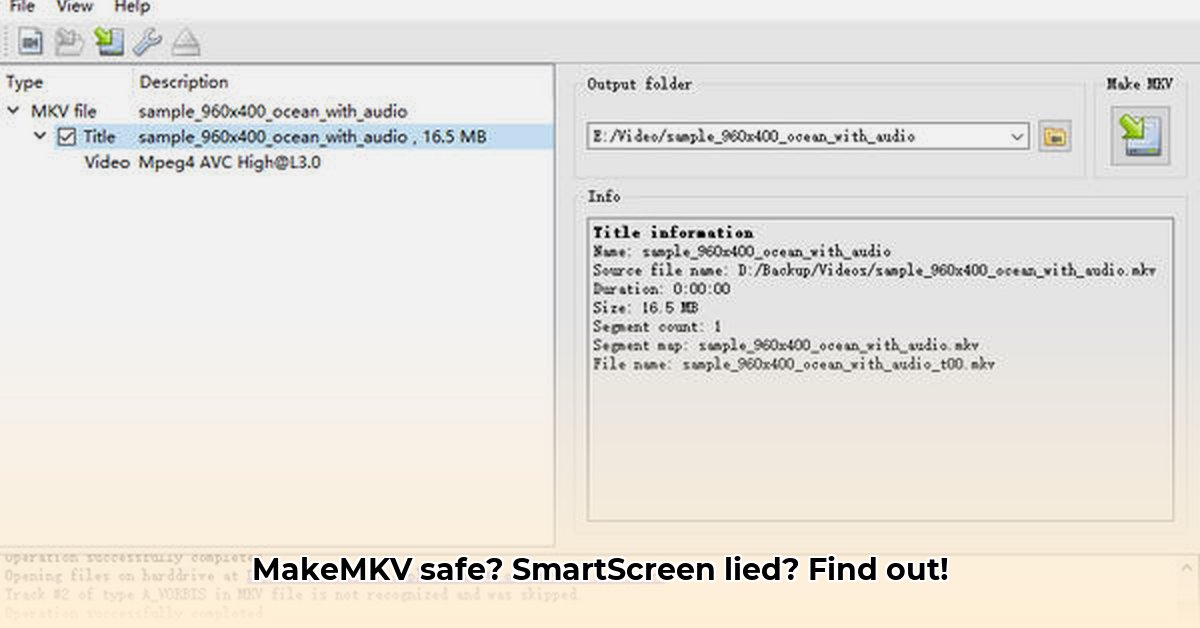
Understanding MakeMKV and SmartScreen Warnings
MakeMKV is a popular application for ripping DVD and Blu-ray discs to digital formats. However, many users report encountering SmartScreen warnings upon execution. These warnings, issued by Windows' built-in security feature, signal potential risks but don't definitively confirm malware presence. This article analyzes user reports, primarily from Reddit, and provides actionable advice to mitigate perceived risks. It's crucial to understand that this analysis does not constitute a formal security audit.
SmartScreen Warnings and User Reports
Numerous Reddit discussions highlight the recurring SmartScreen warnings associated with MakeMKV. While these warnings raise concerns, they lack definitive proof of malicious activity. The warnings themselves stem from SmartScreen's heuristics (methods to identify patterns) and user-submitted data, suggesting a lack of confident identification. Is it possible these warnings are false positives, reflecting the limitations of heuristic-based security systems?
Absence of Confirmed Malware Infections
Critically, there's no confirmed evidence linking MakeMKV to widespread malware infections or significant security vulnerabilities listed in public databases. The absence of such reports, however, doesn't definitively prove the software's complete safety. The information gathered from Reddit, while informative, forms an incomplete dataset, necessitating further investigation. Can we rely on user reports from a single platform to draw comprehensive conclusions about software safety?
Actionable Recommendations for Users and Developers
To address the uncertainties surrounding MakeMKV's safety, we offer practical recommendations for both users and developers.
For MakeMKV Users:
- Pre-Installation Scan: Before installing MakeMKV, run a full system scan with a reputable antivirus program (e.g., Malwarebytes, Norton, McAfee).
- Post-Installation Scan: After installation, perform another full system scan to ensure no malicious code was introduced.
- Regular Updates: Maintain updated antivirus software and MakeMKV itself. Updates often include crucial security patches. Keeping software updated improves your computer’s security, which is critical for preventing attacks.
- Virtual Machine (Optional): For heightened security, consider running MakeMKV within a virtual machine (VM) to isolate it from your main system. This adds an extra layer of protection, though it's not needed for most users.
- Report Suspicious Activity: Report any unusual behaviour or detected threats to MakeMKV developers immediately.
For MakeMKV Developers:
- Investigate SmartScreen Flags: Thoroughly investigate why SmartScreen flags MakeMKV. Address any technical inconsistencies that might trigger false positives.
- Digital Signature Implementation: Implement a digital signature to verify software authenticity and origin, building user trust.
- Independent Security Audit: Commission an independent security audit by a reputable firm to validate the software's security posture.
- Transparent Communication: Maintain open communication with users, providing timely updates and addressing concerns promptly.
Risk Assessment Matrix
This matrix assesses the likelihood and impact of potential risks associated with MakeMKV. Likelihood is based on currently available evidence, not a fully comprehensive security audit.
| Risk Category | Likelihood | Impact (Severity) | Mitigation Strategies |
|---|---|---|---|
| Malware Infection | Low | High | Pre and post-installation scans; VM usage (optional); report suspicious activity |
| Data Breach | Low | Medium | Secure storage practices; strong passwords |
| Privacy Violation | Low | Medium | Review MakeMKV's privacy policy |
| Software Vulnerability | Low | Medium to High | Regular updates; report any issues to developers |
Conclusion: A Call for Further Investigation
While currently available evidence doesn't indicate widespread harm from MakeMKV, the SmartScreen warnings and lack of a formal security audit necessitate further investigation. Following the recommended mitigation strategies provides practical ways to manage the perceived risks. Transparency from developers and independent security audits would greatly enhance user confidence and clarify the software’s safety profile. Remember, proactive security measures are always a good idea.